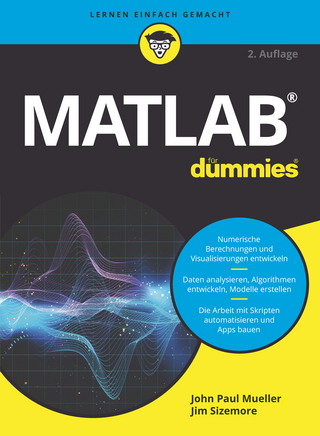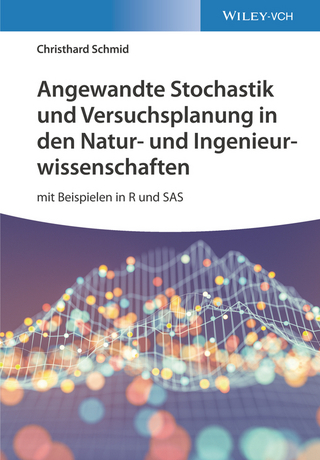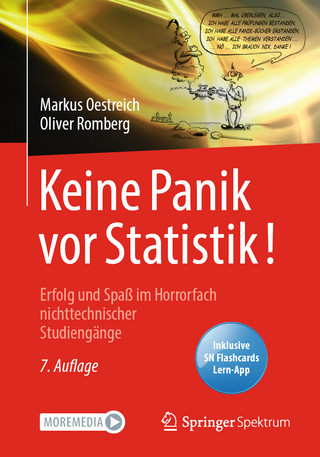
Integrated Population Biology and Modeling, Part A
North-Holland (Verlag)
978-0-444-64072-7 (ISBN)
Arni S.R. Srinivasa Rao works in pure mathematics, applied mathematics, probability, and artificial intelligence and applications in medicine. He is a Professor at the Medical College of Georgia, Augusta University, U.S.A, and the Director of the Laboratory for Theory and Mathematical Modeling housed within the Division of Infectious Diseases, Medical College of Georgia, Augusta, U.S.A. Previously, Dr. Rao conducted research and/or taught at Mathematical Institute, University of Oxford (2003, 2005-07), Indian Statistical Institute (1998-2002, 2006-2012), Indian Institute of Science (2002-04), University of Guelph (2004-06). Until 2012, Dr. Rao held a permanent faculty position at the Indian Statistical Institute. He has won the Heiwa-Nakajima Award (Japan) and Fast Track Young Scientists Fellowship in Mathematical Sciences (DST, New Delhi). Dr. Rao also proved a major theorem in stationary population models, such as, Rao's Partition Theorem in Populations, Rao-Carey Theorem in stationary populations, and developed mathematical modeling-based policies for the spread of diseases like HIV, H5N1, COVID-19, etc. He developed a new set of network models for understanding avian pathogen biology on grid graphs (these were called chicken walk models), AI Models for COVID-19 and received wide coverage in the science media. Recently, he developed concepts such as “Exact Deep Learning Machines, and “Multilevel Contours within a bundle of Complex Number Planes. book “Ancient Inhabitants of Jebel Moya published by the Cambridge Press under the joint authorship of Rao and two anthropologists. On the basis of work done at CU during the two year period, 1946-1948, Rao earned a Ph.D. degree and a few years later Sc.D. degree of CU and the rare honor of life fellowship of Kings College, Cambridge. He retired from ISI in 1980 at the mandatory age of 60 after working for 40 years during which period he developed ISI as an international center for statistical education and research. He also took an active part in establishing state statistical bureaus to collect local statistics and transmitting them to Central Statistical Organization in New Delhi. Rao played a pivitol role in launching undergraduate and postgraduate courses at ISI. He is the author of 475 research publications and several breakthrough papers contributing to statistical theory and methodology for applications to problems in all areas of human endeavor. There are a number of classical statistical terms named after him, the most popular of which are Cramer-Rao inequality, Rao-Blackwellization, Rao’s Orthogonal arrays used in quality control, Rao’s score test, Rao’s Quadratic Entropy used in ecological work, Rao’s metric and distance which are incorporated in most statistical books. He is the author of 10 books, of which two important books are, Linear Statistical Inference which is translated into German, Russian, Czec, Polish and Japanese languages,and Statistics and Truth which is translated into, French, German, Japanese, Mainland Chinese, Taiwan Chinese, Turkish and Korean languages. He directed the research work of 50 students for the Ph.D. degrees who in turn produced 500 Ph.D.’s. Rao received 38 hon. Doctorate degree from universities in 19 countries spanning 6 continents. He received the highest awards in statistics in USA,UK and India: National Medal of Science awarded by the president of USA, Indian National Medal of Science awarded by the Prime Minister of India and the Guy Medal in Gold awarded by the Royal Statistical Society, UK. Rao was a recipient of the first batch of Bhatnagar awards in 1959 for mathematical sciences and and numerous medals in India and abroad from Science Academies. He is a Fellow of Royal Society (FRS),UK, and member of National Academy of Sciences, USA, Lithuania and Europe. In his honor a research Institute named as CRRAO ADVANCED INSTITUTE OF MATHEMATICS, STATISTICS AND COMPUTER SCIENCE was established in the campus of Hyderabad University.
Preface Arni S.R. Srinivasa Rao and C.R. Rao Section I: Cellular Population Dynamics 1. Population Dynamics and Evolution of Cancer Cells Ignacio A. Rodriguez-Brenes and Dominik Wodarz 2. Stochastic and Deterministic Modeling of Cell Migration Enrico Gavagnin and Christian A. Yates 3. Data-Driven Mathematical Modeling of Microbial Community Dynamics Shinji Nakaoka 4. Reaction–Diffusion Kinetics in Growing Domains C. Escudero, S.B. Yuste, E. Abad and F. Le Vot
Section II: Insect Experiments to Human Demographic Theories 5. The Life Table Population Identity: Discovery, Formulations, Proof, Extensions, and Applications James R. Carey, Sarah Silverman and Arni S.R. Srinivasa Rao 6. Stochastic Modelling of Some Natural Phenomena: A Special Reference to Human Fertility R.C. Yadava 7. Two Decades of Drosophila Population Dynamics: Modelling, Experiments, and Implications Sutirth Dey and Amitabh Joshi
Section III: Complex Environmental and Biogeochemical Dynamics 8. The Environmental Kuznets Curve Fails in a Globalized Socio-Ecological Metapopulation: A Sustainability Game Theory Approach Tamer Oraby, Chris T. Bauch and Madhur Anand 9. Integrated Approach for Modeling Coastal Lagoons: A Case for Chilka Lake, India S.R.V. Prasad Bhuvanagiri, Srinivasu Pichika, Raman Akkur, Kalavati Chaganti, Rakhesh Madhusoodhanan and Sarada Varma Pusapati
Section IV: Measures of Mortality and Stochastics 10. Measures and Models of Mortality Vladimir Canudas-Romo, Stefano Mazzuco and Lucia Zanotto 11. Stochastic Population Models John Fricks and Ephraim Hanks 12. Survival Probabilities From 5-Year Cumulative Life Table Survival Ratios (Tx + 5/Tx): Some Innovative Methodological Investigations Subrata Lahiri
Section V: Human Inequality Measures and Well Being 13. Methods of Measuring Human Well-being and Human Development Udoy Saikia, Gouranga Dasvarma and James Chalmers 14. A Bio-Demographic Perspective on Inequality and Life Expectancy: An Analysis of 159 Countries for the Periods 1970–90 and 1990–2010 David A. Swanson and Lucky M. Tedrow
| Erscheinungsdatum | 02.11.2018 |
|---|---|
| Reihe/Serie | Handbook of Statistics |
| Sprache | englisch |
| Maße | 152 x 229 mm |
| Gewicht | 1250 g |
| Themenwelt | Mathematik / Informatik ► Mathematik ► Wahrscheinlichkeit / Kombinatorik |
| Naturwissenschaften ► Biologie ► Evolution | |
| ISBN-10 | 0-444-64072-X / 044464072X |
| ISBN-13 | 978-0-444-64072-7 / 9780444640727 |
| Zustand | Neuware |
| Haben Sie eine Frage zum Produkt? |
aus dem Bereich


